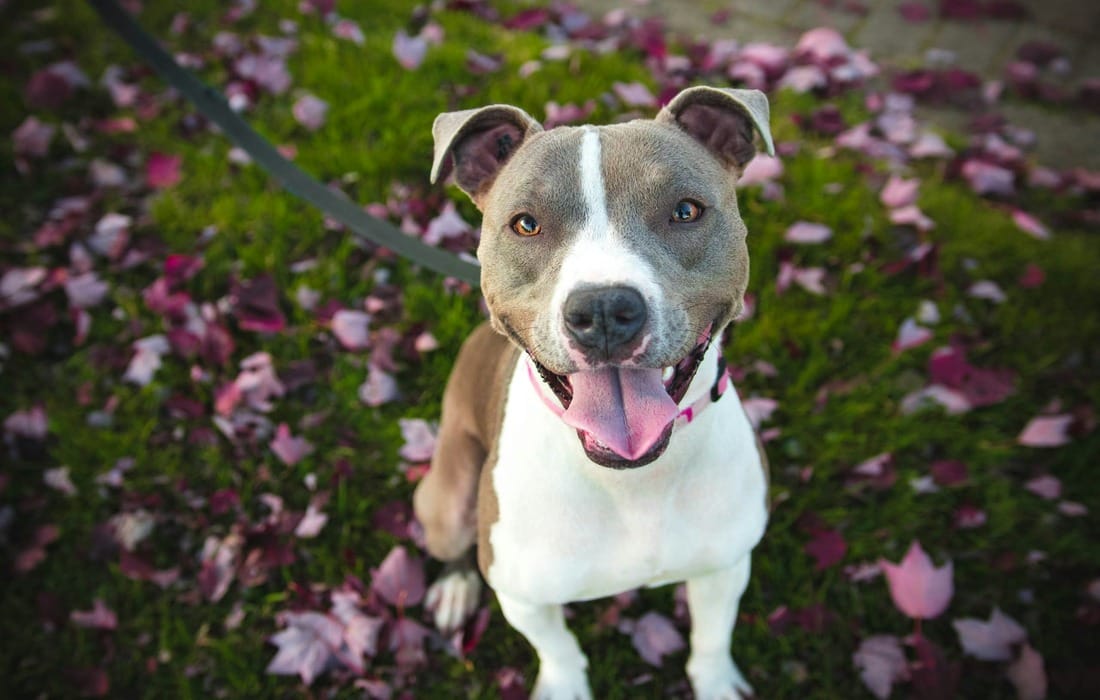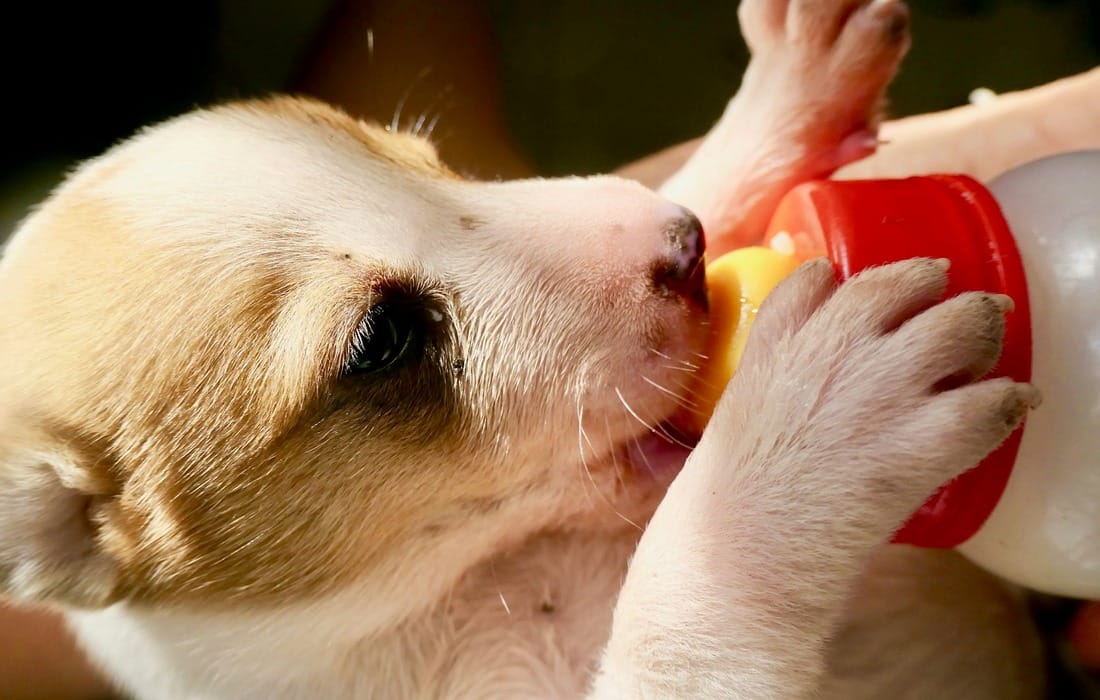If you’ve ever caught your dog staring longingly while you slice cucumbers for a salad, and wonder if this crisp, hydrating snack is safe for your furry friends. The answer is Yes. Dogs can eat cucumbers – but in moderation and with proper preparation. Packed with water and low in calories, cucumbers make a refreshing treat that can even support hydration and weight management. However, it’s crucial to understand how to serve them safely and the potential risks, like choking or upset stomachs, if not introduced correctly. Let’s explore what makes cucumbers a healthy snack and how to include them in your dog’s diet responsibly.
Are Cucumbers Safe for Dogs?
Cucumbers are a refreshing snack for humans, and it might surprise you to learn that they can also be a great treat for dogs when given in moderation. They’re packed with nutrients and contain minimal calories, making them an appealing option for pet owners who want to give a healthy treat to their furry companions. However, understanding their nutritional value, hydration benefits, and how to safely include them in your dog’s diet is essential.
Nutritional Value of Cucumbers for Dogs
Cucumbers are not just empty calories; they actually provide several vitamins and minerals that can support your dog’s health. Let’s break down some key nutrients:
- Vitamin K: This vitamin helps support healthy blood clotting and bone strength in dogs. Strong bones mean your dog can run, jump, and play without as much risk of injury.
- Vitamin C: Known for boosting the immune system, Vitamin C plays a role in neutralizing free radicals and improving overall health.
- B Vitamins: These are essential for maintaining your dog’s energy levels, ensuring they stay active and alert throughout the day.
- Potassium: Potassium helps maintain proper muscle function and heart health in dogs, much like it does in humans.
- Magnesium: This mineral is necessary for energy production and helps regulate nerve and muscle function.
That said, while cucumbers have these benefits, remember that your dog’s primary source of nutrition should come from high-quality, balanced dog food. Treats like cucumbers are complementary, not a substitute.
Learn more about the nutritional advantages of feeding dogs cucumbers in this detailed guide from PetMD.
Hydration Benefits of Cucumbers
One of the standout features of cucumbers is their incredible water content—approximately 96%! This makes them a fantastic option for keeping your dog hydrated, especially during hot summer days. Dehydration can sneak up on dogs quickly, and offering a cucumber slice or two is a simple way to ensure they get that extra boost of water.
For dogs who are hesitant to drink enough water, cucumbers can act as a supplemental source of hydration. However, they should not replace your dog’s water bowl but serve as an occasional aid.
More insights on the hydrating properties of cucumbers are available in this article from Purina.
Portion Control and Nutrition Balance
As much as cucumbers are a safe and healthy snack, moderation is key. Like any treat, they should not make up more than 10% of your dog’s daily caloric intake. Dogs have specific dietary needs, and their main source of nutrition should always come from their regular food.
To avoid overfeeding or an unbalanced diet, follow these guidelines:
- For small dogs, offer 1–2 thin slices of cucumber.
- For medium-sized dogs, a small handful of slices (3–4).
- For large dogs, up to half a cucumber, cut into bite-sized pieces, is sufficient.
It’s important to cut cucumbers into manageable portions regardless of your dog’s size. Large pieces could become a choking hazard, especially for puppies or smaller breeds. Watch for any symptoms such as diarrhea or vomiting after introducing cucumbers into their diet, and if these occur, discontinue feeding and consult your veterinarian.
For more tips on balancing your dog’s diet while providing treats, this AKC guide is worth exploring.
How to Prepare Cucumbers for Dogs
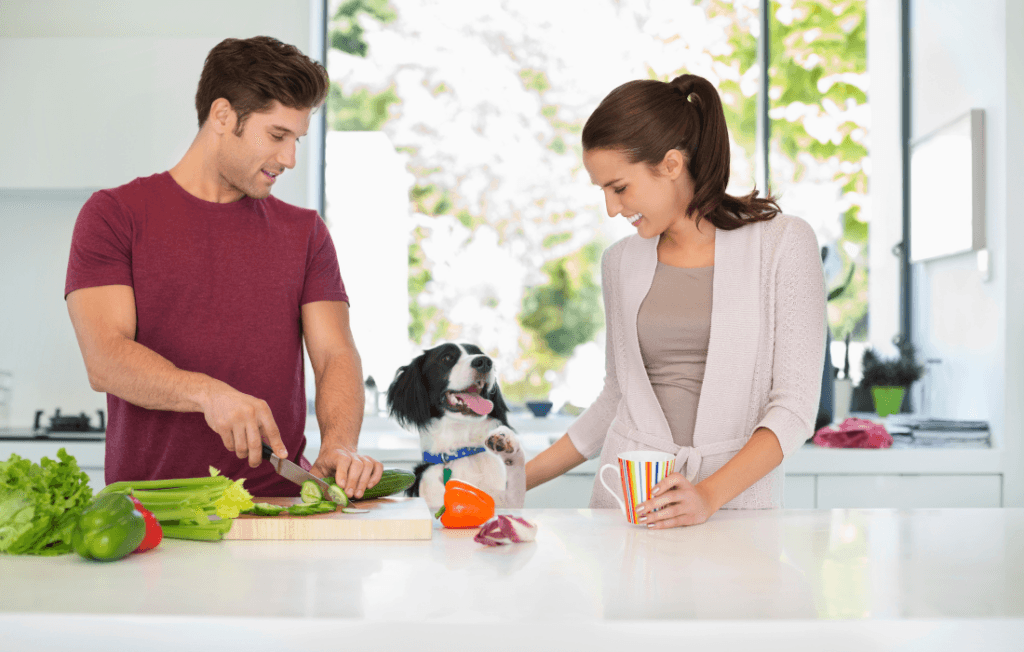

Preparing cucumbers for your dog takes only a few minutes but ensures their safety and enjoyment. Whether you’re serving this veggie as an occasional treat or a refreshing snack, following safe preparation steps is key. Below, we’ll go through everything from cleaning cucumbers to fun serving ideas.
Step-by-Step Preparation Guide
Preparing cucumbers for your dog doesn’t require fancy techniques, but it’s important to be mindful of potential choking hazards or digestive sensitivities. Follow this simple guide to ensure you’re doing it safely:
- Wash the cucumber: Start by rinsing the cucumber thoroughly under cool water to remove dirt, bacteria, and any lingering pesticides. Organic cucumbers can reduce the risk of chemicals, but washing is still a must.
- Peel the skin (optional): The peel is safe for most dogs, but if your dog is small or prone to tummy troubles, peeling helps reduce the chances of digestive issues.
- Remove the seeds: While cucumber seeds are generally safe, some dogs may have trouble digesting them. Scooping them out can make digestion easier, especially for puppies.
- Cut into bite-sized pieces: This step is crucial to avoid choking. Cut the cucumber into small, manageable pieces depending on your dog’s size. Thin slices or small cubes work best.
Treat cucumbers like you would any new food—introduce them in small amounts and monitor your dog for any unusual reactions.
Safe Portion Sizes by Dog Size
Cucumbers are low in calories, but portion control is still important. Overfeeding can lead to digestive discomfort, even with a healthy snack like this. Here’s a quick guide to serving sizes based on your dog’s size:
- Small dogs (under 20 lbs): 1–2 thin slices.
- Medium-sized dogs (20–50 lbs): 3–4 slices or small cubes.
- Large dogs (50+ lbs): 5–6 slices or up to half a cucumber, diced.
No matter the size of your dog, always avoid large chunks or whole pieces, as these can pose choking risks, especially for small breeds or puppies.
Serving Ideas for Variety
Want to make cucumber snacks more exciting for your pup? Here are a few creative serving suggestions to keep things interesting:
- Raw slices: Keep it simple with plain cucumber slices or cubes. Perfect for a low-effort treat that’s crunchy and refreshing.
- Frozen cubes: Freeze small cucumber pieces for a hydrating summer snack. The cool texture is especially soothing for teething puppies.
- Mix with other fruits and veggies: Combine cucumbers with dog-safe options like carrots, blueberries, or apples for a colorful and nutrient-packed snack mix.
- Training treats: Cut cucumber into tiny pieces for low-calorie training rewards. The crunch can hold your dog’s attention without adding extra sugar or fat.
By switching up the preparation and presentation, cucumbers can go from a simple snack to a versatile treat your dog will love.
For more safety tips and preparation ideas, check out this detailed guide from AKC.
Can Puppies Eat Cucumbers?
If you’ve recently welcomed a puppy into your home, you’re probably curious about what snacks and treats are safe for them. Puppies are naturally inquisitive — sniffing, licking, and exploring everything in their environment. When it comes to cucumbers, the good news is that they are generally safe for most puppies, provided they’re given in small, manageable amounts and prepared properly. However, there are some precautions and guidelines you’ll want to follow to ensure your puppy’s safety and enjoyment.
Why Moderation is Key for Puppies
Unlike adult dogs, puppies have developing digestive systems that are more sensitive to new foods. While cucumbers are low in calories and packed with water, they should be introduced slowly to avoid upsetting your puppy’s tummy. Even foods as gentle as cucumbers can cause diarrhea or vomiting if given in excess.
Here’s why moderation matters:
- Developing Digestive System: Puppies are still adjusting to solid foods, so introducing anything unfamiliar — even something as mild as cucumber — should be done gradually.
- Sensitive Stomachs: Overloading a puppy with any new food, including cucumbers, may lead to digestive issues like gas or loose stools.
How to Safely Prepare Cucumbers for Puppies
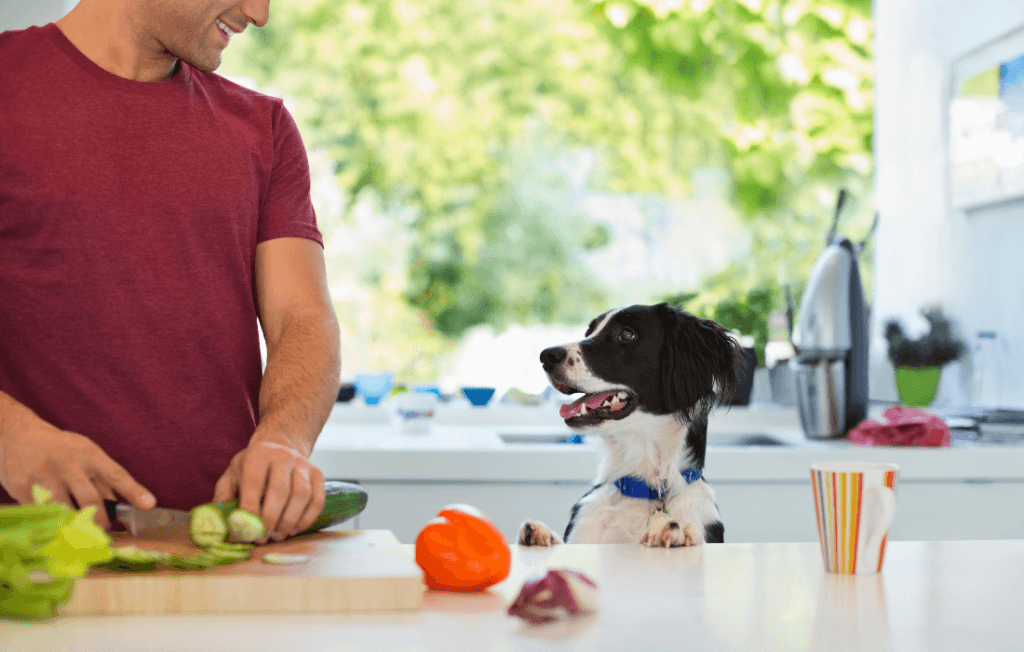

When offering cucumbers to your puppy, preparation is everything. Puppies are smaller and less experienced eaters, making choking hazards and portion sizes an essential consideration. Follow these steps to ensure their safety:
- Wash and Peel: Begin by scrubbing the cucumber under water to remove dirt or pesticides. If your puppy has a sensitive stomach, peeling the cucumber might make it easier for them to digest.
- Remove Seeds: While cucumber seeds are safe, they can sometimes be harder for young puppies to digest. Removing them ensures a smoother introduction to this treat.
- Cut Into Very Small Pieces: Puppies need bite-sized pieces to avoid choking. Think thin slices or small cubes no bigger than the size of your fingernail.
- Start Slow: Offer just one little piece to see how your puppy reacts. Monitor for any signs of discomfort before offering more.
How Much Cucumber is Safe for Puppies?
To avoid overfeeding, stick to these portion guidelines:
- Small Breed Puppies: A single small cube of cucumber.
- Medium to Large Breed Puppies: Start with 1–2 small pieces, gradually increasing to a few slices as they grow.
It’s better to keep portions on the smaller side, especially if this is their first time trying cucumber.
Watch for Signs of Intolerance
Introducing a new food to your puppy means keeping an eye out for signs that their body isn’t tolerating it well. If your puppy shows any of these symptoms, discontinue feeding cucumbers and consult your vet:
- Vomiting
- Diarrhea
- Lethargy
- Excessive Drooling or Discomfort
For more puppy-safe feeding tips, this AKC article about cucumbers is a helpful resource.
Avoid Pickles and Processed Cucumbers
It’s worth noting that while fresh cucumbers are safe, pickled cucumbers are an entirely different story. Pickles are cucumbers soaked in a brine of salt, vinegar, and sometimes garlic or onion, which can be harmful to dogs and especially risky for puppies. The high sodium content alone poses a dangerous risk of dehydration and kidney strain. Ingredients like garlic, commonly found in pickle recipes, are outright toxic to dogs.
If you’re unsure whether your puppy has ingested a pickle or processed cucumber, watch for symptoms like excessive thirst, vomiting, or fatigue, and contact your vet immediately. Learn more about the risks of pickled foods for dogs from this helpful guide on PetMD.
Puppies can enjoy cucumbers just as much as adult dogs, but the golden rule is moderation. With proper preparation and close monitoring, cucumbers can make for a refreshing, hydrating snack that’s perfect for growing pups.
Why Pickled Cucumbers Are Unsafe for Dogs
When it comes to cucumbers, the crisp crunch of a fresh slice is a refreshing and safe treat for dogs in moderation. However, once cucumbers are transformed into pickles, they become a hazard rather than a helpful snack. Pickled cucumbers may seem like an innocuous addition to your dog’s diet, but the ingredients and preparation process can put their health at serious risk. Let’s dig into what makes them unsafe.
High Sodium Levels
Pickles are brined in salt as part of the preservation process, often resulting in sodium levels that are drastically higher than what a dog’s diet can safely handle. Excess sodium can cause a range of health problems for your pup, from mild dehydration to severe complications like sodium poisoning. Over time, consistent exposure to high-sodium foods can also tax their kidneys.
Symptoms of high sodium intake in dogs include:
- Excessive thirst
- Frequent urination
- Vomiting
- Lethargy
If your dog accidentally ingests a pickle and shows any of these symptoms, it’s important to consult your vet immediately. Learn more about the dangers of salty foods for dogs in this PetMD article about pickles.


Toxic Ingredients in Pickling Recipes
Beyond the salt, many pickling recipes include ingredients that are outright toxic to dogs. Garlic, for example, is a common addition to pickle brines, and it contains compounds that can damage a dog’s red blood cells, potentially leading to anemia. Even small amounts of garlic can be harmful over time.
Other harmful additives found in pickled cucumbers might include:
- Onion: Like garlic, onions are toxic to dogs and can cause anemia.
- Vinegar: While not directly toxic, the acidic nature of vinegar can upset your dog’s stomach and lead to digestive issues.
- Spices: Chili peppers, mustard seeds, or other spices used in pickling can irritate your dog’s mouth and stomach.
For a detailed look at which pickled foods are safe and which aren’t, check out this guide from the AKC.
Dangers of Preservatives and Artificial Additives
Commercial pickles often contain preservatives, artificial colors, and flavorings that may not sit well with your dog’s system. These additives could trigger allergic reactions, cause gastrointestinal distress, or lead to long-term health problems.
What to Do if Your Dog Eats Pickled Cucumbers
Accidents happen. If your dog eats a small piece of pickle, monitor them closely for any symptoms of discomfort or unusual behavior. Symptoms that warrant an immediate call to the vet include:
- Diarrhea
- Vomiting
- Drooling excessively
- Lack of appetite
If you’re unsure, it’s always safer to reach out to your vet for advice. You can also read more about what to watch for and how to respond in this guide from MetLife Pet Insurance.
Pickled cucumbers are a stark contrast to their fresh counterparts when it comes to canine health. While cucumbers provide hydration and nutrients when served plain, the added salt, spices, and harmful ingredients in pickles turn them into a serious health hazard for dogs. Always opt for fresh cucumbers, and leave the pickles off the menu.
Potential Risks of Feeding Cucumbers to Dogs
While cucumbers can be a healthy and hydrating treat for dogs, not every pup’s belly is equipped to handle them. Like with any new food, you should watch for signs of food sensitivities, choking risks, or digestive troubles. Below, I’ll break down what to look for and when to act to ensure your furry friend stays safe.
Signs of Intolerance in Dogs
When giving cucumbers to your dog for the first time, it’s crucial to monitor their reaction. Though cucumbers are usually safe, some dogs experience intolerance. A few bites might not seem harmful, but if their body doesn’t agree with this snack, the symptoms can show up quickly.
Here are signs that could suggest your dog has trouble digesting cucumbers:
- Vomiting: If your dog vomits shortly after eating, it may indicate digestive upset.
- Diarrhea or Loose Stool: A clear sign that their stomach might not be on board.
- Lethargy: Unusual tiredness or reluctance to move around.
- Wheezing or Difficulty Breathing: Rare but possible if the cucumber caused an allergic reaction or choking.
- Excessive Drooling: Could be a sign of nausea or discomfort.
- Gassiness or Bloating: This can also point to difficulty breaking down the cucumber.
Recognizing these symptoms early can make all the difference. For in-depth guidance, you can check out this helpful article on food intolerance in dogs.
When to Contact a Vet
So, when do you pick up the phone and call your veterinarian? If you’re ever unsure, it’s better to be safe than sorry. Here are moments that require immediate veterinary advice:
- Symptoms Persist for More Than 24 Hours: Lingering issues like diarrhea or vomiting beyond a day are cause for concern.
- Signs Worsen Over Time: A mild symptom becoming severe warrants professional help.
- Breathing Difficulty: Any sign of wheezing or labored breathing is an emergency.
- Unusual Behavior: If your dog becomes overly lethargic, unresponsive, or shows signs of severe abdominal pain, don’t wait.
Remember, you know your dog best. If something feels off, it’s better to get a vet’s opinion. Unsure of what qualifies as an emergency? This guide on when to take your dog to the vet can help outline the red flags.
Feeding cucumbers to dogs can be as simple as keeping an eye out for these potential risks and acting quickly if needed. Their health and happiness always come first!
Health Benefits of Cucumbers for Dogs
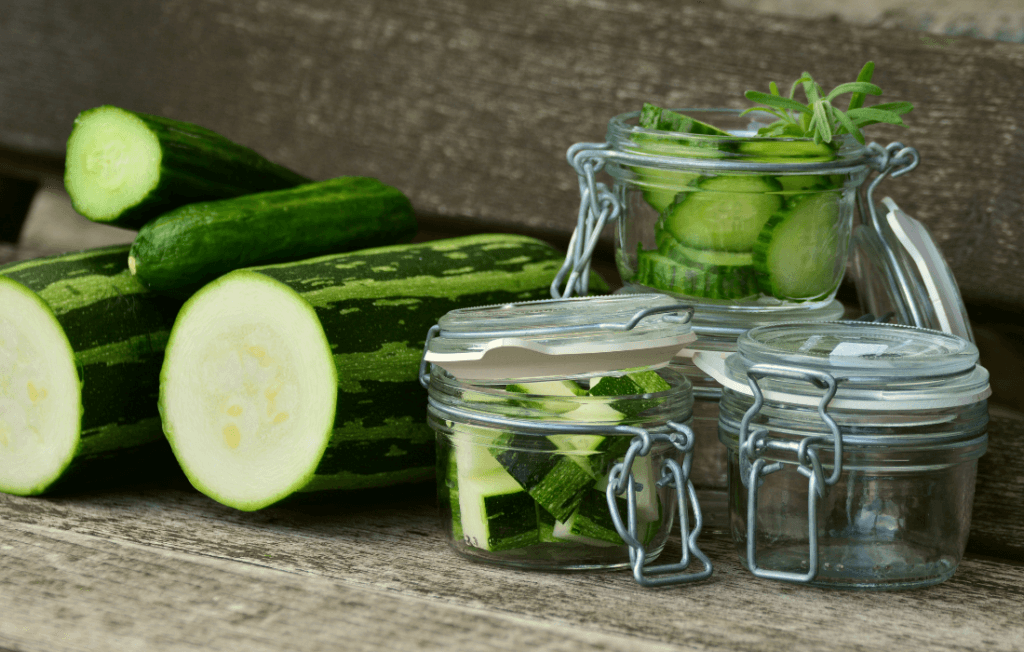

Cucumbers aren’t just a refreshing snack for humans—they can also provide surprising health benefits for our furry companions. As low-calorie, hydrating veggies, cucumbers offer unique advantages tailored to a dog’s dietary needs. Whether you have an active pup or one with specific health concerns, adding cucumbers to their treat routine can be beneficial. Let’s break it all down.
Weight Management Support
Weight management can be challenging for dogs, especially those prone to gaining weight or dealing with obesity-related health issues. Cucumbers shine as an excellent low-calorie snack option. Consisting of about 96% water, they’re almost calorie-free, making them ideal for dogs who need to shed some pounds without sacrificing taste.
Think of cucumbers as nature’s guilt-free treat! One half-cup of sliced cucumbers only has roughly 8 calories, compared to the 30-40 calories in commercial dog treats. You can use cucumber slices to replace higher-calorie snacks while still providing a satisfying crunch that dogs love.
Key benefits include:
- Low Fat & Low Calorie: Perfect for overweight dogs who need portion-controlled snacks.
- High Water Content: Keeps pups hydrated, especially during summer or after exercise.
- Rich in Vitamins: Supports overall health while keeping calorie intake low.
Struggling with weight management for your dog? Pair cucumber treats with regular exercise to see noticeable results. For more tips on managing a dog’s weight, this AKC guide on managing diet and snacks can help.
Low-Sugar Snack for Diabetic Dogs
If your dog has diabetes, finding safe, low-sugar treats can be challenging. Many traditional options contain hidden sugars or carbohydrates that can negatively impact blood sugar levels. Fortunately, cucumbers are a diabetic-friendly alternative. Their natural sugar content is minimal, meaning they won’t cause harmful spikes in glucose levels.
For diabetic dogs, these benefits stand out:
- Low Glycemic Index: Cucumbers have almost no impact on blood sugar.
- No Artificial Additives: Unlike processed treats, fresh cucumbers are free from preservatives or artificial sweeteners.
- Safe for Daily Snacking: Small cucumber portions can work as healthy, consistent rewards.
Monitoring your dog’s sugar levels? Swapping out sugary training treats with cucumber slices could make a big difference in their overall health. Check with your vet for precise recommendations, and read more about diabetic-friendly foods for dogs on PetMD.
Cucumbers as a Training Reward
Training rewards don’t always have to be meaty or store-bought. Cucumbers make for a versatile, healthy option when teaching tricks or rewarding good behavior. Dogs are just as excited about the crisp bite of a cucumber as they are about more calorie-heavy rewards. But what makes cucumbers even better is their low calorie count, which means you can use more of them during longer training sessions without worrying about adding unwanted weight.
When using cucumbers as training treats:
- Cut into Small Pieces: Bite-sized chunks keep your dog focused without being overwhelming.
- Crunchy Texture: The audible crunch can be as rewarding as the flavor for some pups!
- Different Shapes for Variety: Try thin slices or diced cubes for variety and enhanced engagement during training.
It’s also a useful trick for dogs with dietary restrictions or those who need to avoid processed treats. Not every reward needs to be a protein-heavy snack—sometimes, a crisp cucumber is all it takes to motivate your furry friend.
For more snack ideas to use during training, this comprehensive guide from Rover has helpful insights.
Cucumbers may seem simple, but their adaptability makes them a great addition to your dog’s diet. Whether you’re managing weight, supporting a diabetic dog, or looking for a fresh reward option during training, cucumbers are a fantastic choice. Remember, moderation is key!
Final Thoughts
Cucumbers can be a simple, healthy snack for your dog when served correctly. They’re hydrating, low in calories, and offer small amounts of vitamins like K, C, and B. But it’s important to remember that cucumbers are a treat—not a replacement for balanced dog food.
Always prepare cucumbers by washing, peeling (if needed), and cutting them into small, bite-sized pieces to avoid choking hazards. Start with small portions and monitor your dog for any adverse reactions, like vomiting or diarrhea.
If you’re looking for a nutritious, refreshing snack or a low-calorie training reward, cucumbers are a great option. Just be cautious with portion sizes and skip pickled cucumbers altogether due to the added salt and harmful ingredients. Your dog’s safety and health always come first. Have you tried cucumbers with your pup yet? Let us know how they like this crunchy treat!

